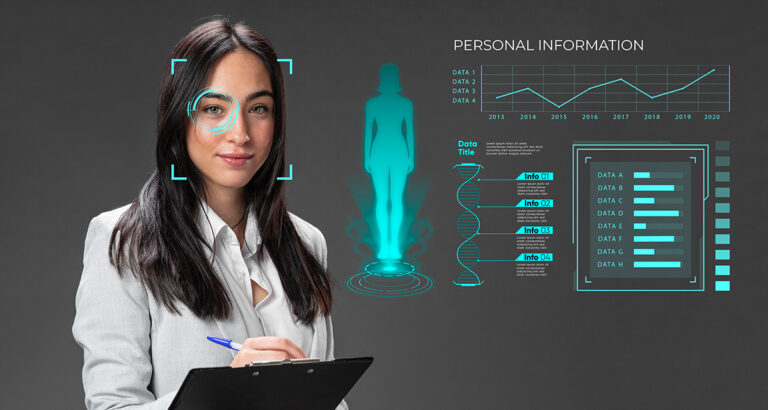The concept of an artificial womb has long occupied the realm of science fiction and speculative thought, capturing imaginations with visions of fully external gestation. However, recent advances in biotechnology, neonatal medicine, and bioengineering have brought this once-futuristic idea to the verge of clinical reality. Artificial womb technology promises to radically transform neonatal care, reproductive medicine, and our understanding of human development. This emerging field holds the potential to significantly improve survival and reduce morbidity for extremely premature infants, to offer novel solutions for infertility and pregnancy complications, and to challenge longstanding ethical and social constructs related to gestation and parenthood.
For medical professionals across all specialties, the rise of artificial wombs represents more than a technical innovation. It signals a shift in the biological, legal, and ethical boundaries of human life. Gestation, historically and biologically tied to the maternal body, may soon become an external, technologically supported process. This shift requires clinicians, researchers, and healthcare leaders to engage proactively with the scientific, clinical, and societal implications of artificial wombs. It compels us to reconsider the definitions of viability, motherhood, and parental responsibility in a world where the environment supporting fetal development is no longer the uterus.
This article reviews the current state of artificial womb technology, exploring its biomedical foundation, clinical potential, and ethical challenges. It outlines the key scientific hurdles yet to be overcome and addresses the implications for various medical fields, including neonatology, maternal-fetal medicine, reproductive endocrinology, and pediatrics. Finally, it considers how artificial wombs may reshape healthcare delivery, legal frameworks, and social perspectives in the decades ahead.
The Biomedical Foundations of Artificial Wombs
The artificial womb seeks to recreate the essential features of the intrauterine environment that support fetal development. Unlike traditional neonatal intensive care units, which provide respiratory and nutritional support to premature infants after birth, artificial womb systems aim to sustain the fetus in a near-physiologic state during the critical stages of organogenesis and maturation. Central to this approach is mimicking the placenta’s gas exchange function, maintaining a sterile, temperature-controlled fluid environment analogous to amniotic fluid, and supporting the fetus through an umbilical interface.
Pioneering work in this domain was demonstrated in 2017 by a research team at the Children’s Hospital of Philadelphia. Using premature lamb fetuses, they developed a “biobag” system that sustained fetuses in a sealed chamber filled with artificial amniotic fluid and connected to an extracorporeal oxygenator mimicking placental function. Over several weeks, the lambs continued to grow and develop organs, notably lung tissue, demonstrating the feasibility of prolonged extrauterine fetal support. This model surpassed existing incubator technology by preserving fetal physiology closer to the natural environment.
The design of an artificial womb involves complex interdisciplinary engineering. The system must regulate temperature, fluid composition, pressure, and sterility while ensuring adequate nutrient and oxygen delivery and metabolic waste removal via the umbilical vessels. Continuous fetal monitoring is essential, including imaging, heart rate, blood gas analysis, and biochemical markers. Challenges remain in replicating the subtle biochemical signaling between mother and fetus, such as hormonal exchanges, immune modulation, and microbiome transfer, all of which influence fetal growth and long-term health outcomes.
Clinical Potential: Expanding the Limits of Viability
One of the primary motivations for artificial womb research is improving outcomes for extremely premature infants. Despite advances in NICU care, survival rates for infants born before 24 weeks gestation remain low, and survivors face high rates of neurological, pulmonary, and gastrointestinal complications. Conventional care supports the transition to independent lung function and thermoregulation but cannot fully replicate the unique environment of the uterus during this vulnerable period.

Artificial womb systems could bridge this gap by enabling external gestation that preserves fetal physiology and minimizes trauma associated with mechanical ventilation and other interventions. Extending gestation ex utero by even a few weeks could markedly improve survival rates and reduce long-term disabilities. Neonatologists may one day transition from stabilizing premature neonates to managing fetal development in an artificial environment.
Beyond extreme prematurity, artificial wombs may transform prenatal care. Certain congenital anomalies amenable to fetal surgery could be treated earlier and more safely within an artificial womb, reducing risks to both fetus and mother. High-risk pregnancies complicated by maternal illness might also benefit, with the possibility of transferring the fetus to an artificial environment to protect maternal health while allowing fetal growth to continue.
Reproductive Medicine and Assisted Gestation
Artificial womb technology has significant implications for reproductive medicine. Individuals with uterine factor infertility, such as those with congenital absence of the uterus or hysterectomy, currently rely on gestational surrogacy or adoption to have genetically related children. Artificial wombs could provide an alternative route for gestational support, circumventing the need for a surrogate.
Transgender women and other individuals who cannot carry a pregnancy might also have the opportunity to parent biological children with the aid of artificial wombs. For patients with medical contraindications to pregnancy, artificial gestation may reduce maternal risks, providing safer reproductive options.
The prospect of external gestation also raises questions about how reproductive technologies and family planning services may evolve. The possibility of full ectogenesis could lead to new fertility treatments, requiring integration with existing assisted reproductive technologies such as in vitro fertilization.
Ethical Challenges and Societal Implications
The development of artificial wombs introduces profound ethical considerations. The concept of gestation outside the human body challenges traditional definitions of pregnancy, motherhood, and parental roles. Legal and societal frameworks tied to natural pregnancy may struggle to accommodate new realities.
Key ethical questions arise regarding the status of a fetus gestated ex utero. Would it have the same rights and protections as a fetus in utero? At what point does a fetus in an artificial womb attain personhood or legal recognition? Who holds decision-making authority over the fetus—the biological parents, medical teams, or external guardians? These questions are further complicated when considering fetal anomalies, potential termination of support, or interventions during artificial gestation.
Consent frameworks must be rethought. The maternal autonomy that governs in utero pregnancies may not directly translate to external gestation. Medical teams will face difficult decisions about the level and duration of support, balancing fetal well-being, parental wishes, and resource considerations.
Socially, artificial wombs may alter perceptions of parenthood and gestation. The traditional bond formed during pregnancy could be affected, influencing parental attachment and child development. Questions remain about how children gestated ex utero might experience identity and social integration.
Equity and access represent significant concerns. Advanced technologies often become available first in high-resource settings, risking exacerbation of global disparities in neonatal outcomes. Policymakers and global health leaders will need to plan carefully to ensure that artificial womb technologies do not deepen existing inequalities in maternal and child health.
Scientific and Developmental Unknowns
Beyond engineering challenges, there are important biological unknowns. The intrauterine environment involves complex hormonal, immunological, and microbial interactions essential for normal fetal development. For example, maternal antibodies transferred across the placenta prime the neonatal immune system. The uterine microbiome may influence gastrointestinal and immune maturation. Hormonal signaling from the mother regulates brain development and metabolism.
Artificial wombs must replicate or replace these critical exposures. Failure to do so may have long-term consequences on health, including increased risks for metabolic diseases, neurodevelopmental disorders, or immune dysfunction. The field of developmental origins of health and disease emphasizes the lasting impact of early environmental factors on lifelong health. Studies to evaluate the epigenetic, immunological, and neurodevelopmental outcomes of artificial gestation will be essential.
Longitudinal human data are lacking and must be collected cautiously through rigorous clinical trials and follow-up studies before widespread clinical adoption.
Regulatory and Legal Considerations
Existing regulatory pathways for medical devices do not fully accommodate artificial wombs, which combine elements of device, drug, and biological product. National and international regulatory bodies will need to develop novel frameworks that address the unique safety, efficacy, and ethical issues posed by ex utero gestation.
Legal definitions of birth, personhood, and parental rights will require reconsideration. Artificial wombs may impact abortion law, particularly in jurisdictions where fetal viability defines abortion legality. A lowered viability threshold due to external gestation may introduce new legal complexities and social debate.
Collaboration between medical societies, ethicists, legislators, and patient advocacy groups will be necessary to develop guidelines that balance innovation with ethical responsibility.
Preparing Medical Professionals and Health Systems
As artificial womb technology develops, medical education and training will need to evolve. Physicians across specialties—including neonatology, obstetrics, pediatrics, reproductive endocrinology, and bioethics—must become familiar with the science and clinical management of artificial gestation.

Health systems will face infrastructure challenges in accommodating artificial womb units, which will differ significantly from NICUs or labor and delivery units. Interdisciplinary care teams will be essential, incorporating bioengineers, fetal medicine specialists, neonatologists, ethicists, and psychosocial support providers.
Early involvement of medical professionals in research, protocol development, and ethical deliberation will ensure that artificial womb technology is integrated responsibly and effectively.
Conclusion
The emergence of artificial womb technology represents one of the most transformative advances in reproductive and neonatal medicine of the 21st century. It stands at the crossroads of biology, engineering, ethics, and law, promising to reshape fundamental aspects of human gestation and birth. For clinicians and researchers alike, the rise of artificial wombs offers both profound opportunities and significant challenges.
From a clinical perspective, artificial wombs have the potential to revolutionize neonatal care by extending viability and drastically reducing morbidity associated with extreme prematurity. This technology may bridge the precarious gap between fetal life in utero and survival ex utero, offering a protective environment where fragile organs continue to mature in conditions that closely mimic the natural womb. Such advances could save thousands of lives each year and improve the quality of survival for countless infants worldwide.
In reproductive medicine, artificial wombs open new avenues for individuals and couples facing infertility or medical contraindications to pregnancy. They could provide a pathway to biological parenthood for women without a uterus, transgender women, or patients for whom pregnancy would pose significant health risks. By externalizing gestation, artificial wombs may reduce maternal morbidity and mortality linked to pregnancy and childbirth, altering the traditional reproductive landscape in profound ways.
Despite these exciting possibilities, artificial womb technology also raises urgent ethical and societal questions. The detachment of fetal development from the maternal body forces us to reconsider longstanding assumptions about parenthood, pregnancy, and the beginning of life. Legal frameworks governing fetal rights, abortion, parental responsibilities, and the definition of birth will require reevaluation to accommodate this new reality. The psychological and social implications for families and children born through artificial gestation remain largely unknown and merit careful study.
Furthermore, scientific challenges remain in replicating the full complexity of the intrauterine environment, including biochemical signaling, immune interactions, and microbiome transfer that are critical for healthy development. Addressing these biological nuances is essential to ensuring that artificial gestation does not inadvertently predispose infants to long-term health issues.
Equity and access constitute another critical concern. Without thoughtful policy and global cooperation, the benefits of artificial wombs risk being confined to wealthy, resource-rich settings, exacerbating existing disparities in maternal and child health. As this technology moves from experimental stages toward clinical application, the medical community must advocate for inclusive strategies that prioritize equitable distribution and accessibility.
Medical education and healthcare infrastructure will also need to adapt. Clinicians across multiple disciplines must gain familiarity with the technology’s principles, capabilities, and limitations. Hospitals will require specialized units designed to accommodate artificial womb systems, and multidisciplinary teams including bioengineers, ethicists, and social workers will be essential for comprehensive care.
As artificial wombs move from the laboratory bench to potential bedside applications, the global medical community must remain vigilant, informed, and proactive. This will ensure that this revolutionary technology fulfills its potential to save lives, expand reproductive choices, and enhance human health—while safeguarding the values and dignity that lie at the core of medicine.





